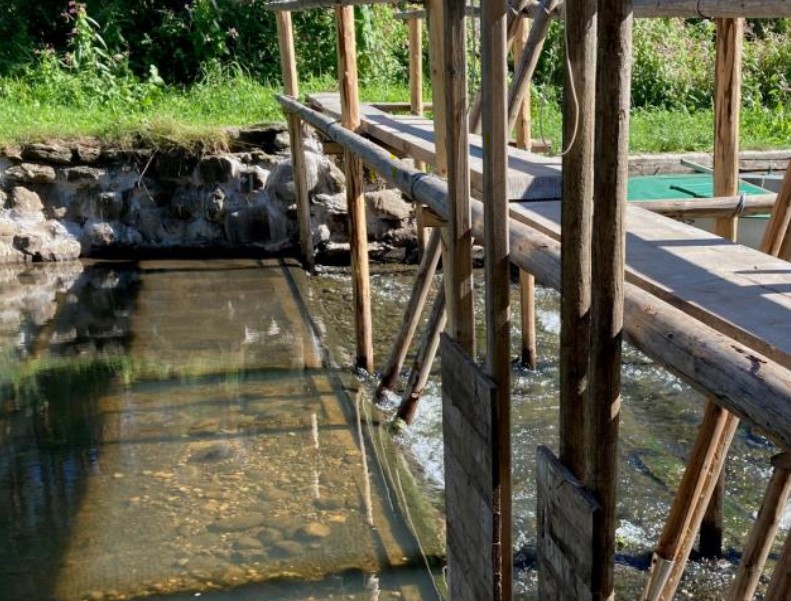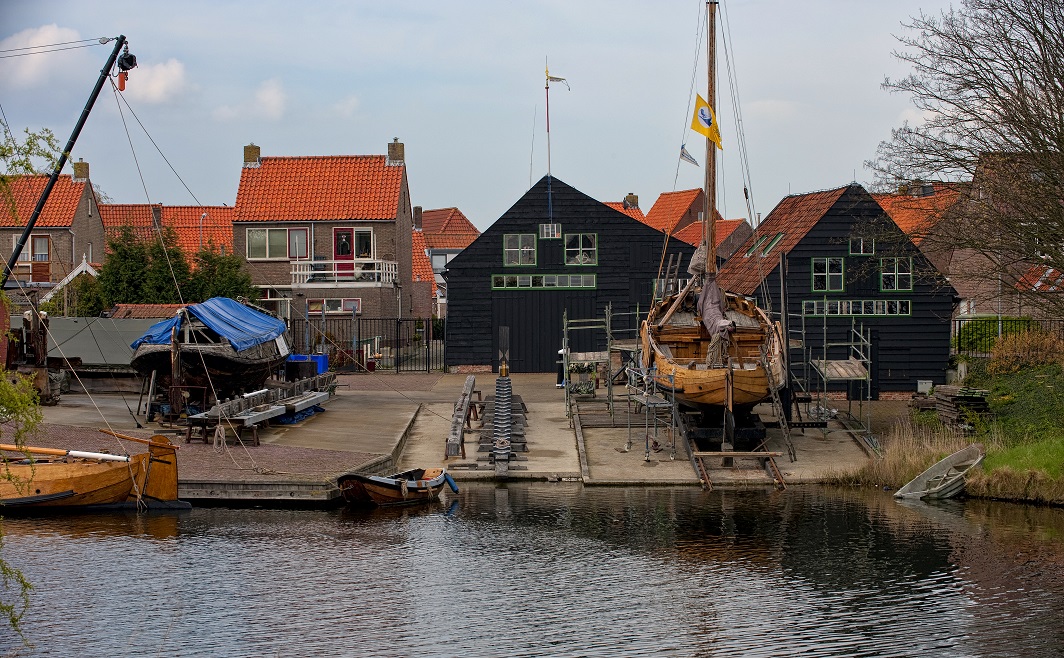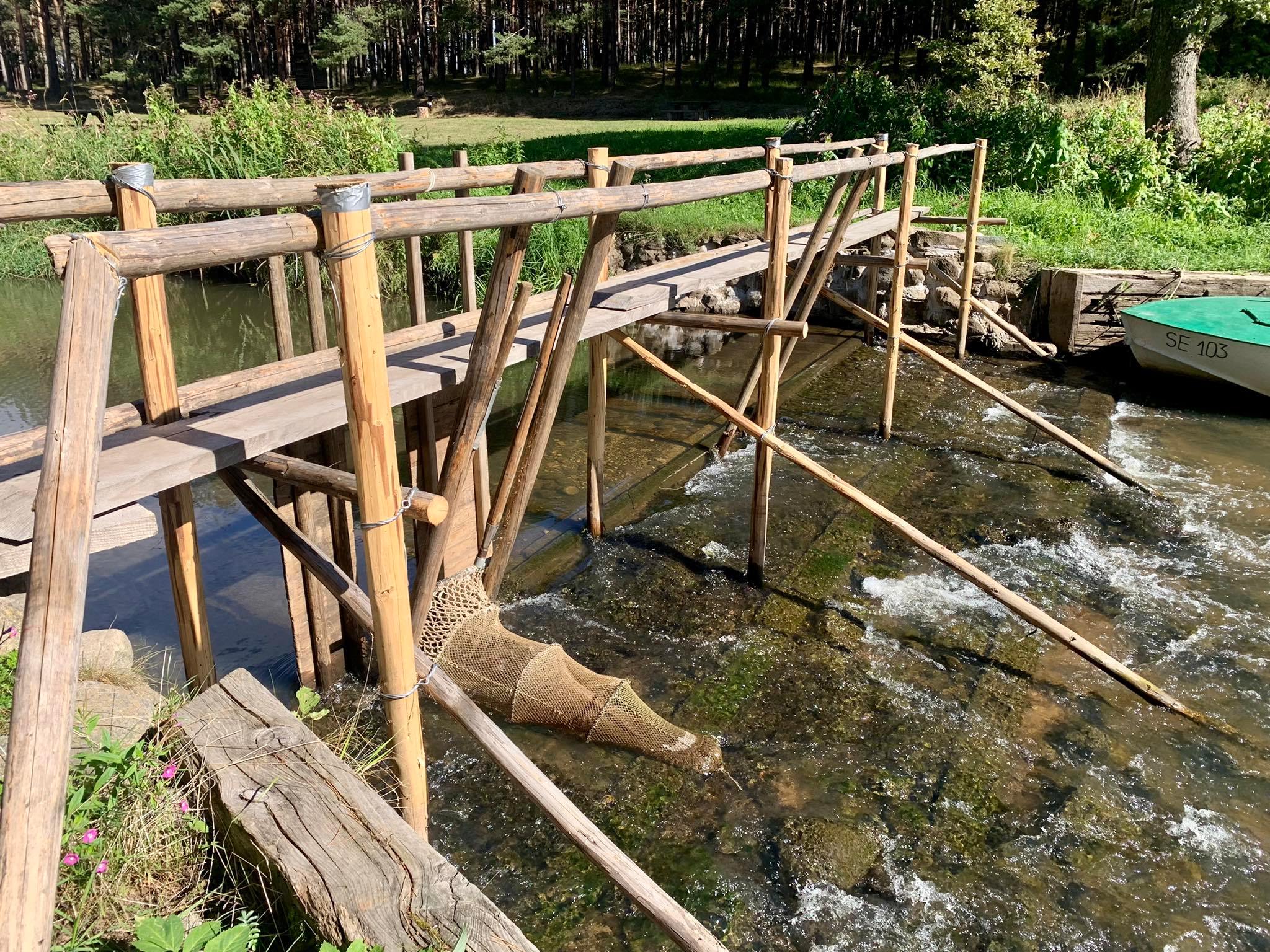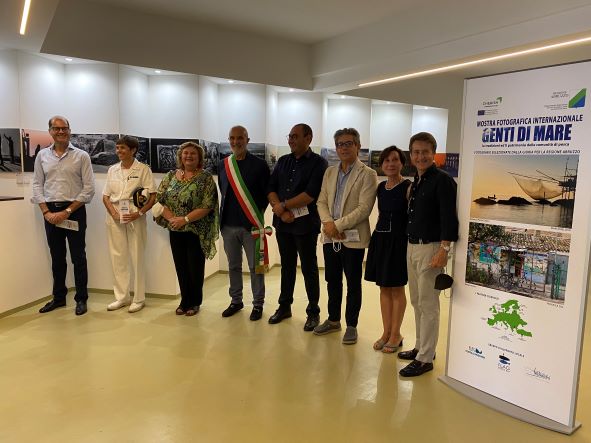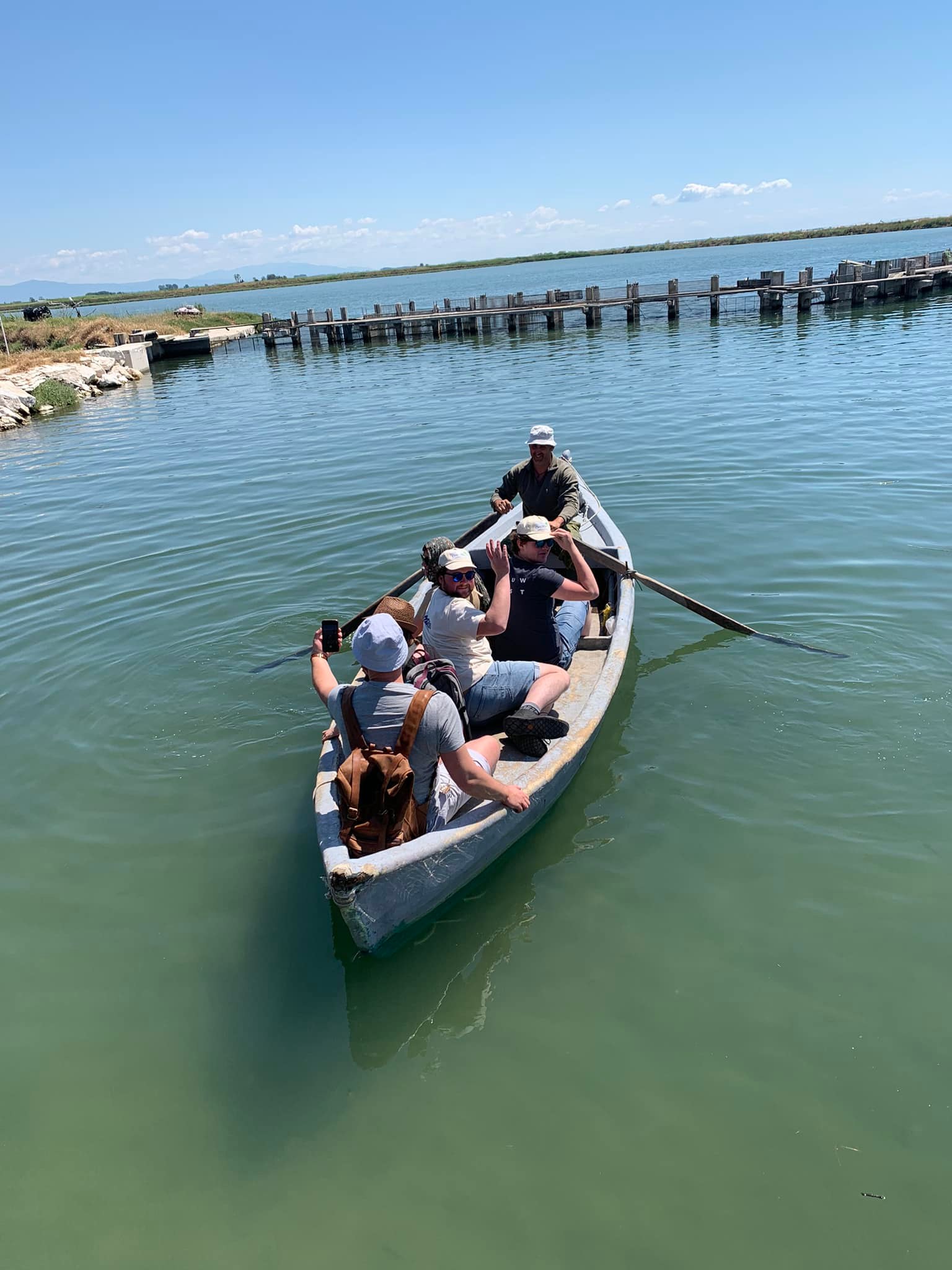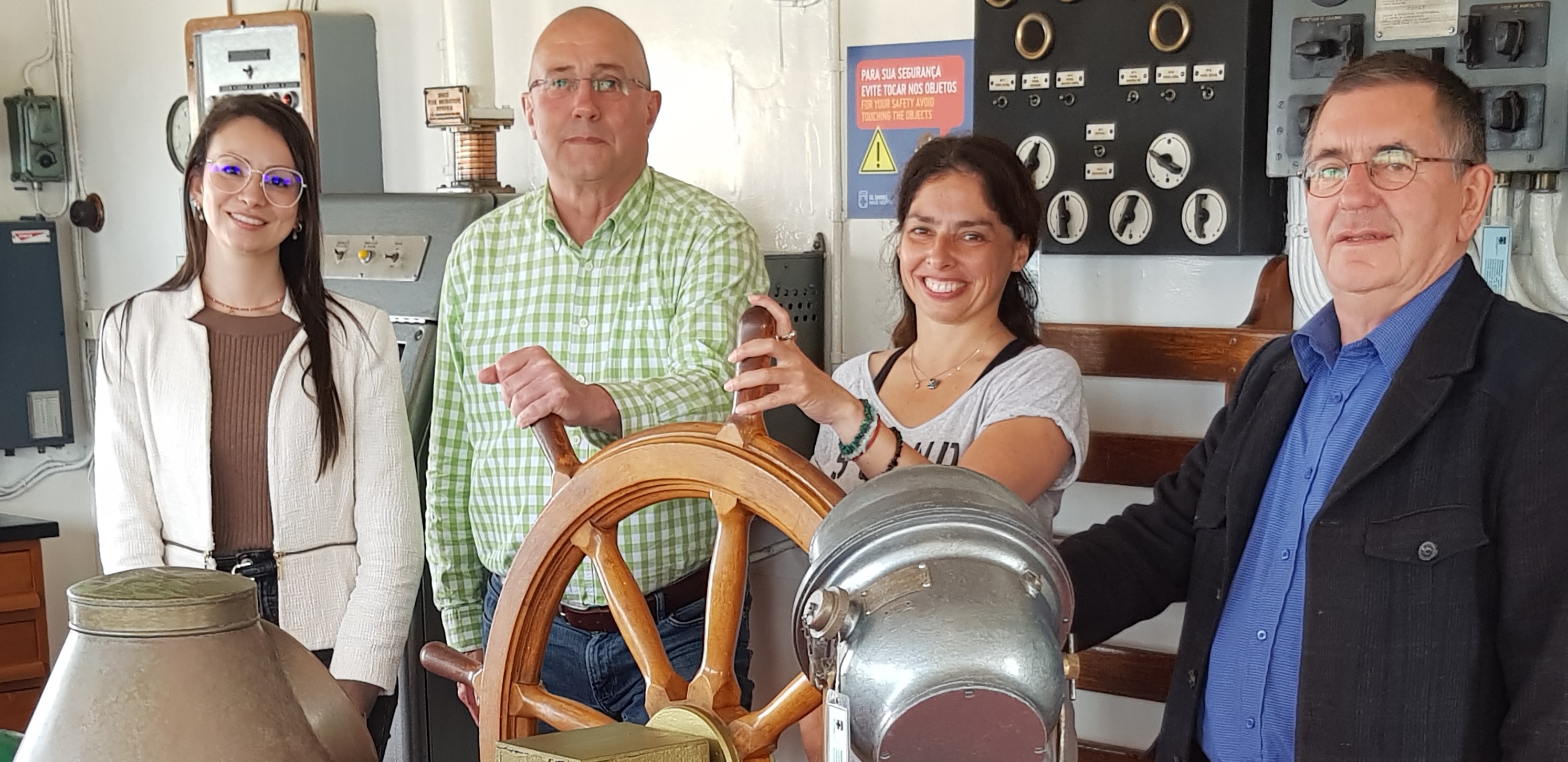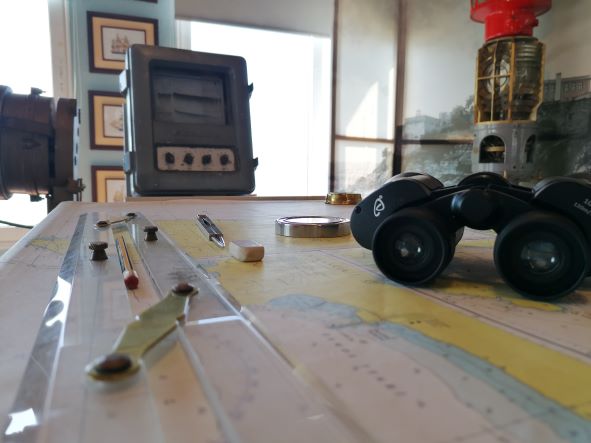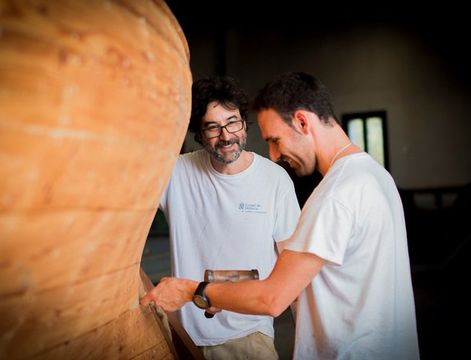A rich harbour town involuntarily turns into a small fishing village, what happened? And what did the inhabitants of Arnemuiden do to recover economically?
Trade
In the 15th century, the port of Arnemuiden became an important location for transhipment. The town was full of people from out of town, and it seems as if two third of the residential buildings were reserved as accommodation for tradesmen. The inhabitants were able to draw their income from these visitors in different ways. Ships had to be built, repaired and equipped. The town became a central player in the international trade of salt. Raw salt was unloaded and processed in the production chain along the Arne, and then sold to merchants in the Republic of the Netherlands and abroad.
By the time the 16th century came around, Arnemuiden was a flourishing port city where ships from Spain, Portugal, France and England liked to moor.

Arnemuiden in 1550, Museum Arnemuiden
Starting anew
Due to changes in sea currents, large sandbanks grew in the open waters of Arnemuiden. This happened so fast that by the start of the 17th century, large ships were no longer able to reach the port. The decline in trade turned fishing into the main source of income for the inhabitants of Arnemuiden, but the loss of jobs in the salt and trade business caused a lot of poverty in the area. It wasn’t until the second half of the 20th century that profit was made with fishing and Arnemuiden became known as a fishing town.
Proud fishing village
Nowadays, the people of Arnemuiden are proud of their heritage as fishermen. Even though the fishing industry is facing challenges such as regulations that reduce the fish stocks and climate change, the local identity of Arnemuiden as a fishing village is being protected. The very first good practice identified in the CHERISH project is the fishery sweater from Arnemuiden. A piece of cultural history that has been successfully revived and led to a renewed interest in the traditions of the village. The Fishery Wharf of Arnemuiden now preserves historic boats as a means to preserve and disseminate old craftsmanship in building, maintaining and restoring the historic vessels. The Wharf “Meerman” has restored more than 20 sailing vessels, which all are in use today. The moulds and tools are now museum pieces and showed while in use: living heritage.


